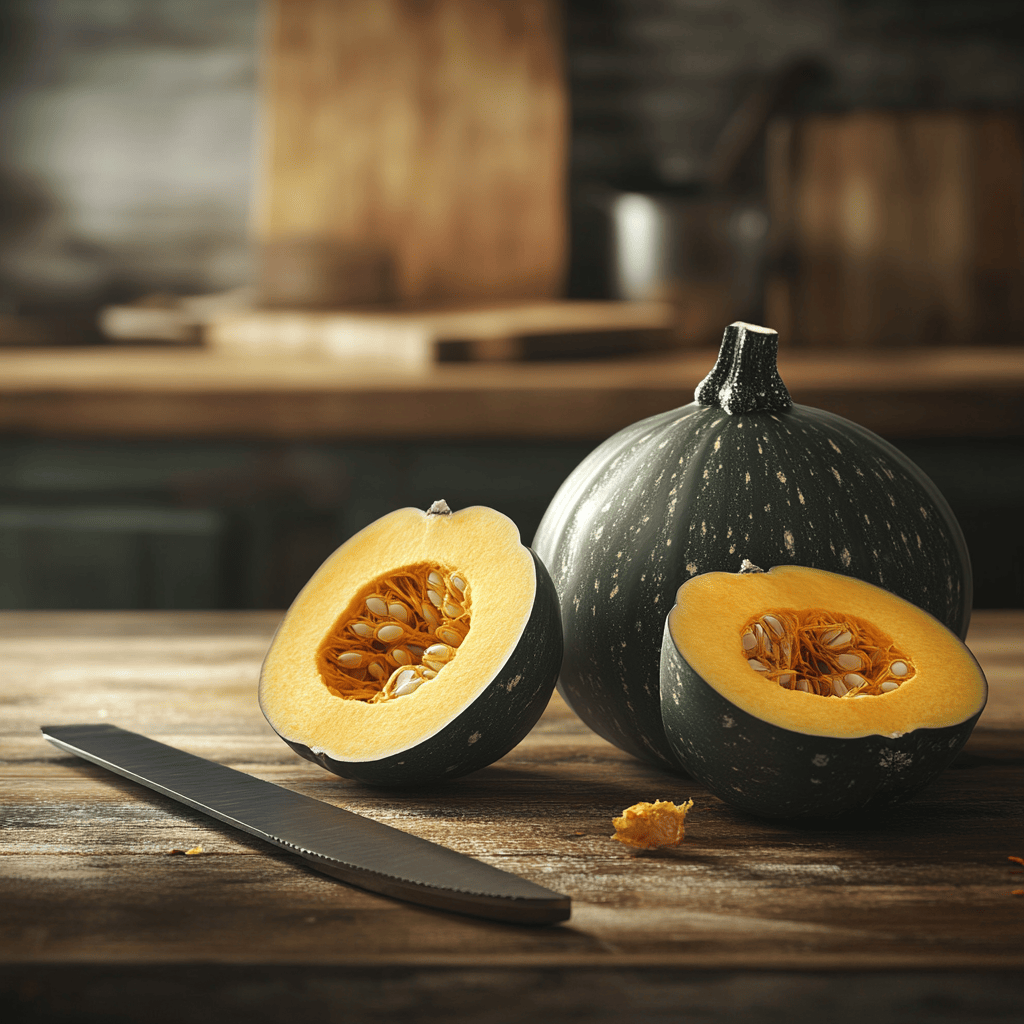Kabocha squash, often referred to as Japanese pumpkin, has found its way into many cuisines worldwide. But when combined with the rich traditions of Chinese vegan cooking, it transforms into something extraordinary. If you’re here for a journey into mouthwatering recipes that are plant-based, full of flavor, and steeped in culture, you’re in the right place. No alcohol. No pork. Just wholesome, feel-good food.
What Makes Chinese Squash Recipes with Kabocha Unique?
Kabocha isn’t your run-of-the-mill squash. Its naturally sweet, nutty flavor and velvety texture make it a versatile superstar. When paired with the vibrant, umami-rich ingredients of Chinese cuisine, it becomes a feast for the senses.
The Nutritional Powerhouse of Kabocha Squash
Did you know kabocha is packed with beta-carotene, vitamin C, and fiber? Not only does it taste fantastic, but it also supports a healthy immune system, glowing skin, and good digestion. It’s like a little health boost in every bite!
Vegan Cooking in Chinese Cuisine: An Overview
Chinese cuisine has always had a soft spot for plant-based dishes. Whether it’s a hearty Buddha’s Delight or a simple tofu stir-fry, the balance of flavors and textures is key. And when you add kabocha to the mix? You’re looking at an elevated experience—comforting, wholesome, and irresistibly delicious.
🧡 Block Quote
“Cooking kabocha in a Chinese style is like giving it a warm hug with soy sauce, ginger, and garlic—simple, yet soul-satisfying.”
Essential Ingredients for Kabocha Vegan Recipes
Before we dive into cooking, let’s get our pantry ready. A good dish starts with the right ingredients, and for kabocha recipes, it’s all about simplicity and harmony.
Choosing the Perfect Kabocha Squash
When shopping for kabocha, go for one that feels heavy for its size. The skin should be deep green with some subtle yellow streaks. No mushy spots, please! And if you’re wondering whether to peel it—don’t! The skin becomes tender and adds texture to your dishes.
Traditional Chinese Spices and Sauces for Vegan Dishes
The secret to authentic flavors lies in the seasonings. Here’s your must-have list:
- Soy sauce: Adds a savory, umami punch. Opt for low-sodium if you like to control the saltiness.
- Sesame oil: A few drops of this fragrant oil can elevate any dish.
- Rice vinegar: Perfect for balancing out sweetness and adding tang.
- Ginger and garlic: The dynamic duo that’s the backbone of many Chinese dishes.
- Five-spice powder: For a hint of warmth and complexity.
Common Vegan Substitutes in Chinese Cooking
Some traditional Chinese recipes use non-vegan ingredients like oyster sauce or shrimp paste. But fear not—vegan alternatives like mushroom-based oyster sauce and fermented bean pastes are here to save the day.
🧡 Block Quote
“Don’t underestimate the power of simple spices—they’re the bridge between bland and bold!”
Simple Chinese Kabocha Recipes to Try at Home
Now for the fun part—cooking! Let’s start with a few easy-to-follow recipes that will make you fall in love with kabocha all over again.
Steamed Kabocha with Soy Sauce and Sesame Oil

Steaming is one of the simplest ways to enjoy kabocha. Cut it into thick wedges, steam until tender, and drizzle with a mixture of soy sauce, sesame oil, and a sprinkle of sesame seeds. It’s simplicity at its best.
Stir-Fried Kabocha with Garlic and Bok Choy
Take thinly sliced kabocha, stir-fry it with minced garlic and fresh bok choy, and add a splash of soy sauce. This dish is perfect as a side or even a light main course.
Sweet Kabocha Soup with Ginger and Coconut Milk
This recipe is for your sweet tooth! Simmer kabocha chunks with fresh ginger and coconut milk until creamy. The result? A dessert soup that’s silky, sweet, and soothing.
Innovative Twists on Traditional Kabocha Recipes
While tradition grounds us, innovation keeps our taste buds excited. Chinese cooking is inherently versatile, making it perfect for experimenting with kabocha squash. Let’s explore some creative recipes that maintain the authenticity of flavors while adding a modern twist.
Kabocha Dumplings with Tofu and Mushrooms

Who doesn’t love dumplings? These bite-sized delights become even better with a kabocha filling. Mash cooked kabocha and mix it with finely chopped tofu, mushrooms, and green onions. Add soy sauce and sesame oil to the mixture, and use it to fill dumpling wrappers. Steam or pan-fry for a golden, crispy treat.
Spicy Kabocha and Black Bean Stir-Fry
For those who crave a bit of heat, this dish is a game-changer. Toss kabocha cubes in a wok with black bean sauce, chili paste, and colorful bell peppers. A sprinkle of roasted peanuts on top adds crunch and contrast to the tender squash.
Kabocha and Rice Noodle Stir-Fry with Peanuts
Rice noodles and kabocha? Yes, please! Stir-fry softened rice noodles with steamed kabocha, shredded carrots, bean sprouts, and scallions. Drizzle with a sauce made of soy sauce, rice vinegar, and a touch of maple syrup. Finish with crushed peanuts for that satisfying bite.
🧡 Block Quote
“Experimentation is the spice of life—and when it comes to kabocha recipes, the possibilities are endless!”
Solving Common Challenges in Vegan Chinese Cooking
Cooking vegan Chinese dishes might feel intimidating at first, especially when you’re trying to replicate the depth of flavor traditionally achieved with animal-based products. Here’s how to tackle some common challenges:
Achieving Depth of Flavor Without Animal Products
The umami flavor, often associated with meat or seafood, can be replicated using:
- Miso paste: A little goes a long way in boosting savory notes.
- Mushrooms: Shiitake or dried mushrooms are rich in umami.
- Fermented bean paste: Adds a salty, slightly funky taste that mimics traditional Chinese seasonings.
- Seaweed: A sprinkle of nori flakes can add a subtle oceanic flavor.
Ensuring Balanced Nutrition in Vegan Meals
A plant-based diet should still be balanced. Kabocha is rich in vitamins, but pairing it with high-protein ingredients like tofu, edamame, or tempeh ensures a complete, satisfying meal.
Finding Suitable Alternatives for Traditional Ingredients
When a recipe calls for non-vegan ingredients like oyster sauce or chicken stock, don’t worry!
- Replace oyster sauce with mushroom-based versions.
- Use vegetable broth instead of chicken stock.
- Swap out eggs in recipes with flaxseed meal or silken tofu.
Tips for Perfecting Vegan Kabocha Recipes
Cooking kabocha isn’t rocket science, but a few tips can make a big difference.
Prepping Kabocha for Easy Cooking
Cutting kabocha can feel like wrestling with a stubborn pumpkin. Here’s how to do it safely:
- Microwave the squash for a minute or two to soften the skin slightly.
- Use a sharp, sturdy knife and slice it in half.
- Scoop out the seeds, and cut it into manageable wedges.
Layering Flavors for Complex Dishes
Chinese cuisine shines because of its layers of flavor. Don’t rush the process—let the aromatics (like ginger, garlic, and onions) cook until fragrant before adding other ingredients. This step is key to unlocking deep, rich flavors.
Plating and Presentation for an Authentic Look
Food is eaten with the eyes first! Serve your kabocha dishes on traditional Chinese plates or bowls, and garnish with fresh herbs like cilantro or green onions. A sprinkle of sesame seeds adds an elegant touch.
Why Kabocha Is a Staple in Chinese Vegan Cuisine
Kabocha squash isn’t just an ingredient—it’s a cultural gem. Its rich flavor, adaptability, and nutritional benefits make it a beloved staple in many kitchens. Let’s dive into why it holds such an important place in Chinese vegan cooking.
Historical and Cultural Significance of Kabocha in China
Kabocha’s roots trace back to East Asia, where it has been cherished for centuries. Known for its hardiness and long shelf life, it became a reliable ingredient in regions with seasonal agriculture. In Chinese cuisine, it is celebrated for its symbolic meanings of prosperity and abundance, often appearing in festive dishes and family meals.
The Growing Popularity of Plant-Based Chinese Dishes
With the rise of plant-based diets globally, traditional Chinese vegan dishes are gaining attention for their natural balance of health and flavor. Kabocha fits seamlessly into this trend, as it complements a variety of vegan proteins and classic Chinese flavors.
🧡 Block Quote
“Kabocha isn’t just a squash; it’s a bridge between tradition and modern plant-based living.”
Frequently Asked Questions About Kabocha Vegan Recipes
Curiosity sparks creativity in the kitchen, so here are answers to some common questions about cooking with kabocha in a Chinese vegan style.
What Are the Best Spices for Chinese Vegan Cooking?
The best spices include ginger, garlic, star anise, five-spice powder, and Sichuan peppercorns. These bring warmth, depth, and that signature Chinese aroma to your dishes.
Can I Freeze Cooked Kabocha for Later Use?
Absolutely! Cooked kabocha freezes well. Store it in an airtight container for up to three months. When you’re ready to use it, thaw it in the refrigerator and reheat gently to maintain its texture.
What Are Some Gluten-Free Options for Chinese Vegan Dishes?
Rice noodles, rice flour dumplings, and tamari (a gluten-free soy sauce) are excellent options. Pair these with kabocha-based dishes for a wholesome gluten-free meal.
Is the Skin of Kabocha Squash Edible?
Yes! Kabocha’s skin softens beautifully when cooked, adding both texture and nutrition. No peeling required—just a good scrub before cooking.
How Do I Prevent Kabocha From Getting Mushy in Stir-Fries?
The trick is to cut kabocha into larger chunks and lightly steam it before stir-frying. This way, it holds its shape while absorbing the flavors of the dish.
Can I Use Kabocha in Desserts?
Yes, kabocha’s natural sweetness makes it perfect for desserts like sweet soups, puddings, or even baked goods. Pair it with coconut milk, brown sugar, or cinnamon for a comforting treat.
Conclusion: Embrace the Versatility of Kabocha Squash
From traditional steamed dishes to innovative stir-fries, Chinese squash recipes with kabocha squash offer a world of possibilities. Whether you’re a seasoned vegan or just looking to try something new, these recipes showcase how simple ingredients can create something extraordinary.
So, grab your wok, stock up on kabocha, and let your culinary creativity flow. Whether you’re preparing a hearty family meal or a cozy dinner for yourself, kabocha has a way of making every dish feel special.
Related Recipes and Inspiration
“End your vegan kabocha meal on a sweet note with this easy kefir sheet cake recipe.”
Black Pepper and Parmesan Soufflé:
“Learn to incorporate bold flavors, like black pepper and parmesan, into your cooking repertoire.”
Traile Paccheri:
“Experiment with unique pasta recipes like Traile Paccheri for a delightful culinary twist.”

